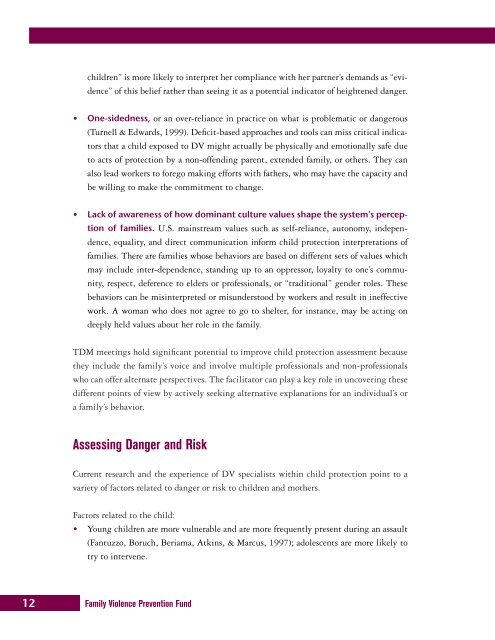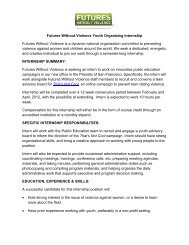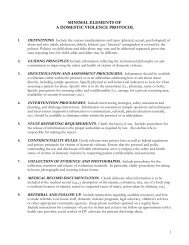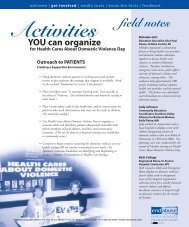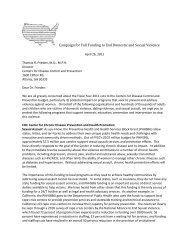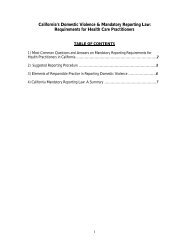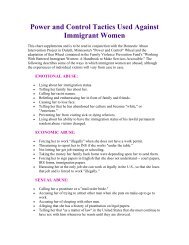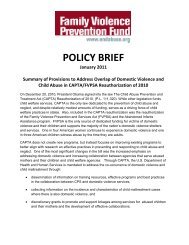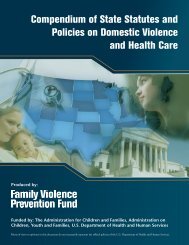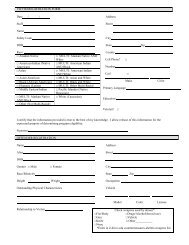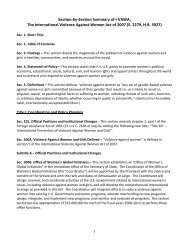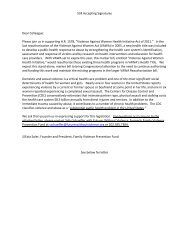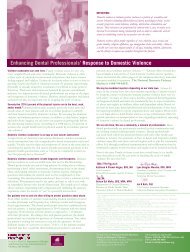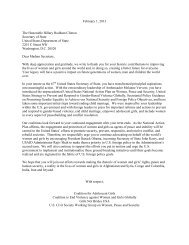Team Decisionmaking and Domestic Violence: Guidelines for ...
Team Decisionmaking and Domestic Violence: Guidelines for ...
Team Decisionmaking and Domestic Violence: Guidelines for ...
Create successful ePaper yourself
Turn your PDF publications into a flip-book with our unique Google optimized e-Paper software.
children” is more likely to interpret her compliance with her partner’s dem<strong>and</strong>s as “evidence”<br />
of this belief rather than seeing it as a potential indicator of heightened danger.<br />
• One-sidedness, or an over-reliance in practice on what is problematic or dangerous<br />
(Turnell & Edwards, 1999). Deficit-based approaches <strong>and</strong> tools can miss critical indicators<br />
that a child exposed to DV might actually be physically <strong>and</strong> emotionally safe due<br />
to acts of protection by a non-offending parent, extended family, or others. They can<br />
also lead workers to <strong>for</strong>ego making ef<strong>for</strong>ts with fathers, who may have the capacity <strong>and</strong><br />
be willing to make the commitment to change.<br />
• Lack of awareness of how dominant culture values shape the system’s perception<br />
of families. U.S. mainstream values such as self-reliance, autonomy, independence,<br />
equality, <strong>and</strong> direct communication in<strong>for</strong>m child protection interpretations of<br />
families. There are families whose behaviors are based on different sets of values which<br />
may include inter-dependence, st<strong>and</strong>ing up to an oppressor, loyalty to one’s community,<br />
respect, deference to elders or professionals, or “traditional” gender roles. These<br />
behaviors can be misinterpreted or misunderstood by workers <strong>and</strong> result in ineffective<br />
work. A woman who does not agree to go to shelter, <strong>for</strong> instance, may be acting on<br />
deeply held values about her role in the family.<br />
TDM meetings hold significant potential to improve child protection assessment because<br />
they include the family’s voice <strong>and</strong> involve multiple professionals <strong>and</strong> non-professionals<br />
who can offer alternate perspectives. The facilitator can play a key role in uncovering these<br />
different points of view by actively seeking alternative explanations <strong>for</strong> an individual’s or<br />
a family’s behavior.<br />
Assessing Danger <strong>and</strong> Risk<br />
Current research <strong>and</strong> the experience of DV specialists within child protection point to a<br />
variety of factors related to danger or risk to children <strong>and</strong> mothers.<br />
Factors related to the child:<br />
• Young children are more vulnerable <strong>and</strong> are more frequently present during an assault<br />
(Fantuzzo, Boruch, Beriama, Atkins, & Marcus, 1997); adolescents are more likely to<br />
try to intervene.<br />
12 Family <strong>Violence</strong> Prevention Fund


